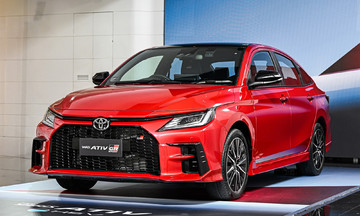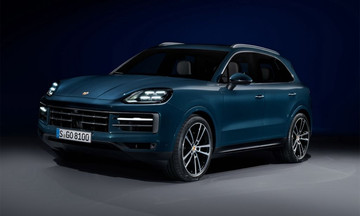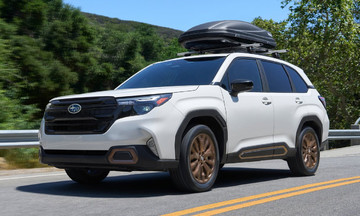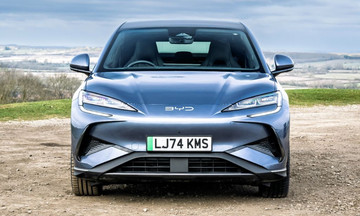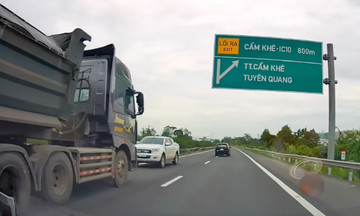In early June, BYD Vietnam organized the "Mileage Challenge with BYD Sealion 6" journey from Hanoi to Ho Chi Minh City. Three teams, each with a Sealion 6 filled with 60 liters of fuel and a full battery charge, participated to determine the maximum distance achievable without refueling. According to BYD, the Sealion 6 can travel 1,200 km on a full tank and charge.
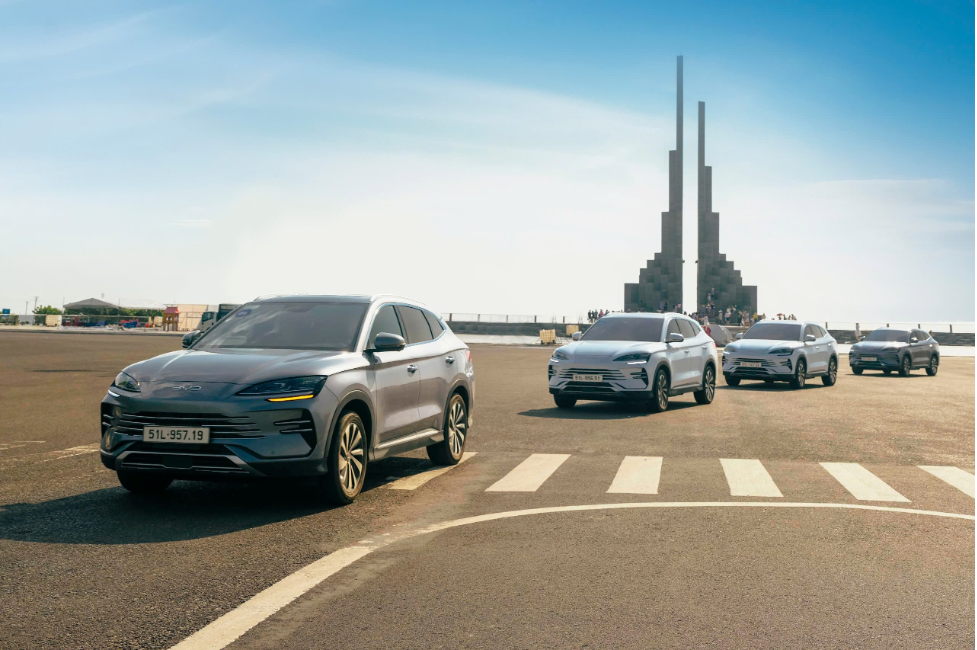 |
The Sealion 6 vehicles on the journey. Photo: BYD |
The Sealion 6 vehicles on the journey. Photo: BYD
The numbers don't lie: our team's vehicle reached 1,795.1 km on a single tank and full charge. I partnered with Manh Thang, founder of the WhatcarVN channel, forming team two. The other two teams achieved very similar results. During the journey, the Sealion 6 averaged 3.3 liters/100 km. However, achieving this result wasn't easy.
For the first 300 km, we experimented with various driving styles to determine the most efficient strategy. The vehicle's computer system indicated that the most fuel-efficient speed range was between 40 and 60 km/h.
Having discovered this "golden speed range," we maintained a steady speed, set the air conditioning to around 26 degrees Celsius, and maximized the use of regenerative braking. While maintaining a moderately low speed might not reflect typical driving conditions, this was a fuel-efficiency competition, and we were determined to give it our all. Manh Thang shared, "Everyone knows that whether a car runs on gasoline or electricity, it all comes down to energy. Optimizing energy consumption is key to winning."
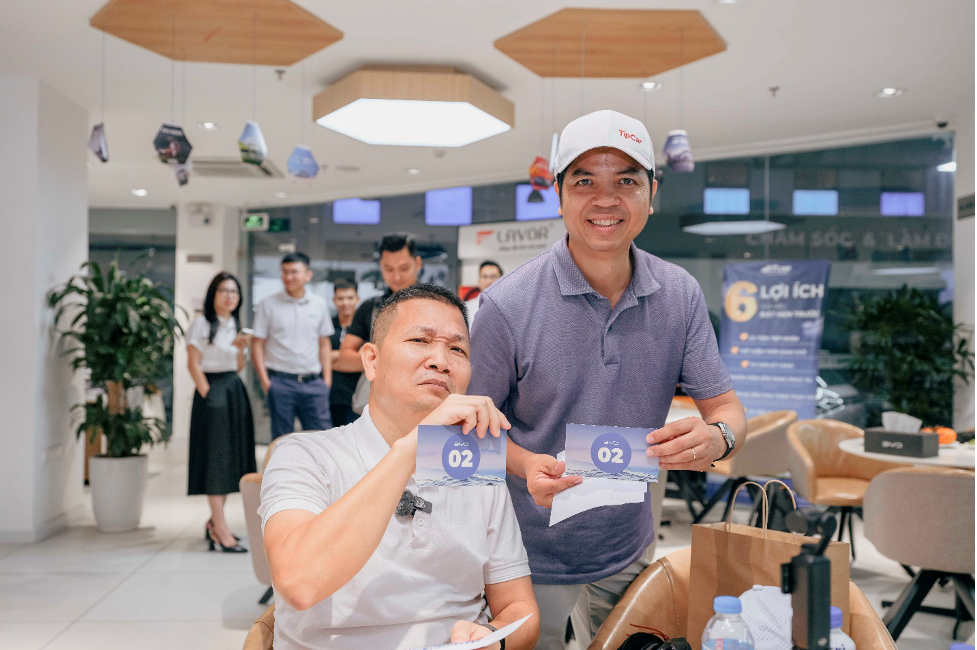 |
Viet Anh (right) and Manh Thang. Photo: BYD |
Viet Anh (right) and Manh Thang. Photo: BYD
When the battery reached 25%, the car had traveled approximately 134 km in pure electric mode and switched to HEV mode. The journey primarily covered mixed terrain, providing ample opportunities to utilize regenerative braking.
Under normal driving conditions, we opted for the medium regenerative braking setting. However, when approaching obstacles, red lights, or downhill slopes, we immediately switched to the high setting. The DM-i technology in the Sealion 6 proved its recharging efficiency.
Throughout the journey, we kept the air conditioning on to demonstrate the vehicle's ability to achieve optimal mileage without sacrificing comfort. According to Thang, we diligently followed the "refrigerator" rule: when exiting the vehicle, we left the engine running and both opened the doors simultaneously before getting back in to minimize heat loss and preserve energy.
All three vehicles in the challenge employed different driving styles, ranging from simple and relaxed to highly technical. However, we all achieved over 1,700 km.
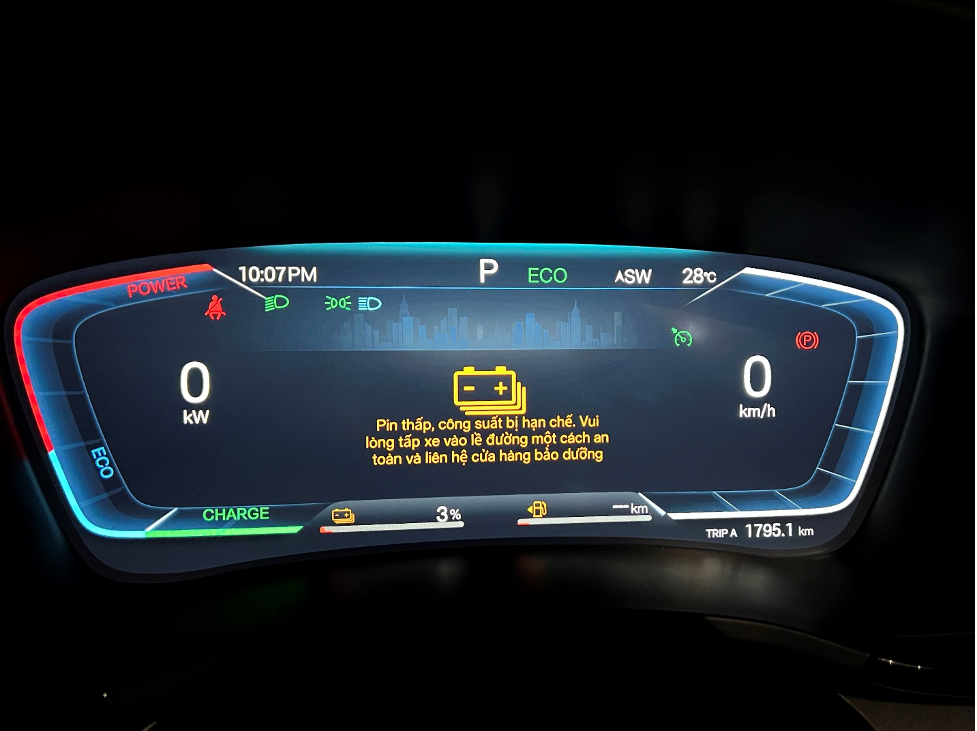 |
The car stopped with 3% battery remaining, out of fuel, and unable to move. Photo: BYD |
The car stopped with 3% battery remaining, out of fuel, and unable to move. Photo: BYD
Beyond fuel efficiency, the Sealion 6 boasts impressive suspension and sound insulation. After nearly 1,800 km of driving, including days with over 500 km of continuous driving, the seats remained comfortable, preventing back pain. This seemingly minor detail is crucial for long-distance journeys. In addition to its fuel economy, we highly appreciated the car's undercarriage and how it handled road vibrations.
In my opinion, the Sealion 6 addresses the needs of two types of drivers. For those with charging access and a daily commute of 100 km, it operates like an electric vehicle. For those without charging access, it offers the economy and convenience of a self-charging hybrid.
Viet Anh



